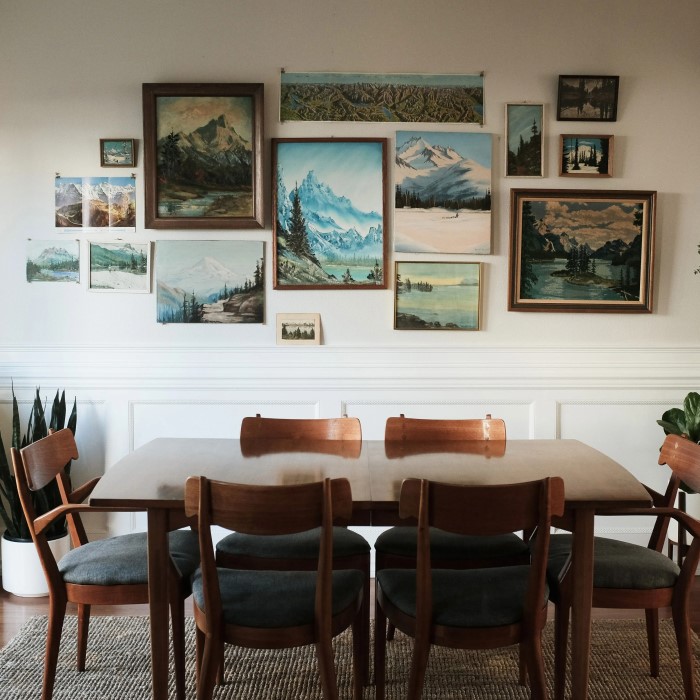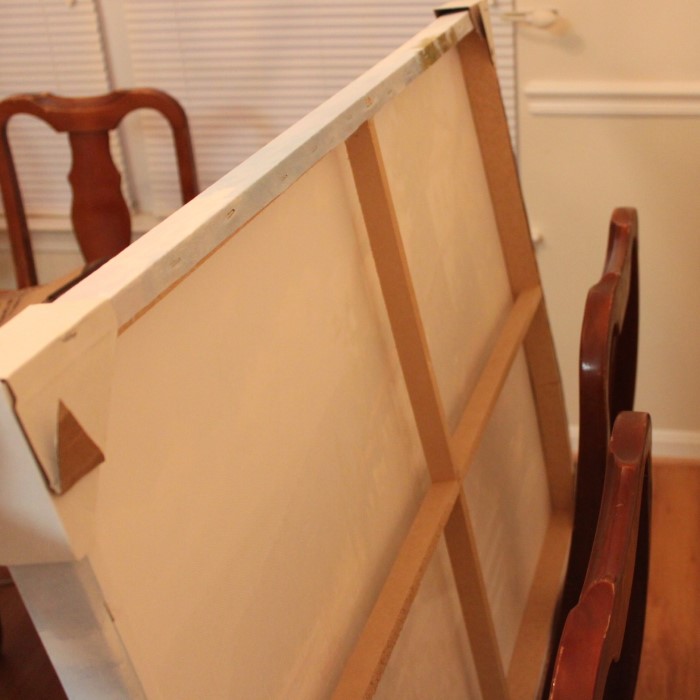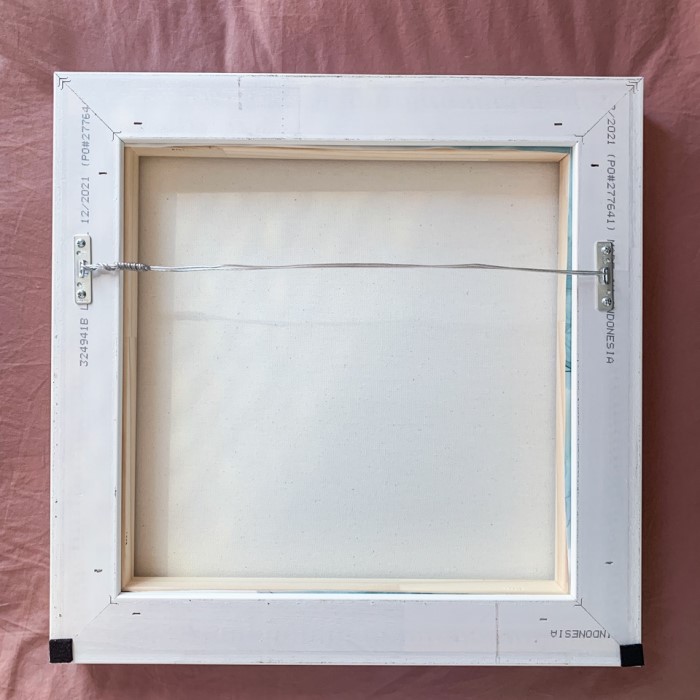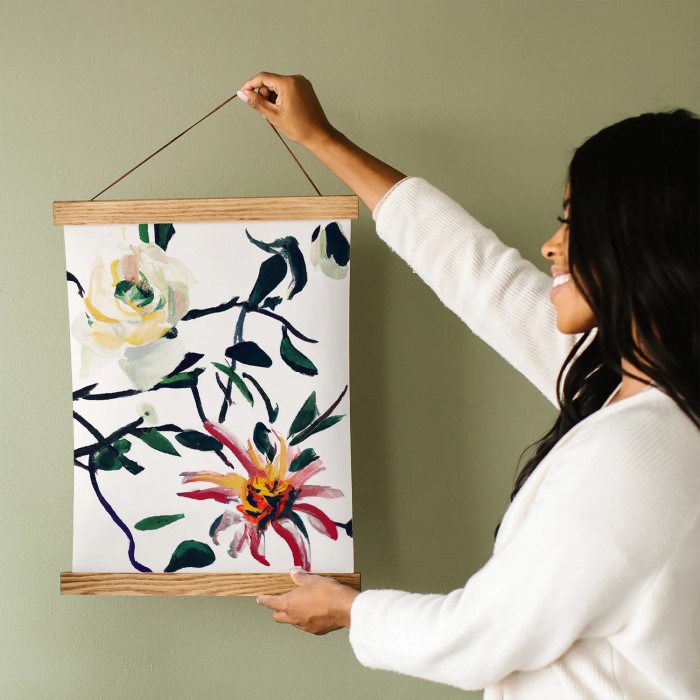Understanding the Significance of Hanging Canvas Paintings
Hanging a canvas painting can transform any space, adding personality and style. However, many homeowners are unsure how to hang a canvas painting correctly. Properly hanging art not only enhances the aesthetics of a room but also ensures that the artwork is displayed in the best possible light. This article will guide you through the process, from choosing the right location to ensuring it is hung securely and attractively.

Choosing the Right Spot for Your Canvas Painting
Selecting the right spot for your canvas painting is crucial. A well-chosen location enhances its impact and complements the room’s design. Here are essential tips to help you decide.
Factors to Consider When Selecting a Wall
- Lighting Conditions: Choose a space with soft, indirect lighting. Avoid walls with harsh sunlight to prevent fading.
- Wall Color: Select a wall color that contrasts or complements the painting. This makes it stand out.
- Room Functionality: Place your canvas in a room where it can be appreciated. Living rooms, bedrooms, and hallways are popular choices.
- Viewing Angle: Consider the angle from which people will see the painting. Ensure it aligns with the room’s seating or focal point.
- Wall Space: Use walls with enough empty space. This avoids a cluttered look and ensures the painting doesn’t overwhelm smaller areas.
Ideal Height for Hanging Artwork
- Eye Level Placement: Hang the canvas so its center is at eye level, usually 57 to 60 inches from the floor.
- Furniture Considerations: If placing above furniture, leave 6 to 12 inches of space between the furniture and the bottom of the canvas.
- Multiple Paintings: For multiple pieces, treat the group as a single shape. Align the center at eye level.
- Room Height: In rooms with high ceilings, you can adjust and hang slightly higher to fill vertical space.
Carefully choosing the right spot ensures the artwork enhances your home and stays protected.
Preparing Your Canvas for Hanging
How to hang a canvas painting? Before you hang your canvas painting, proper preparation is vital. Ensuring the canvas is secure and suitable for hanging helps avoid accidents and keeps your artwork in good condition.
Checking the Weight and Size of the Canvas
- Measure the Canvas Size: Note the dimensions to choose the right spot and hanging tools.
- Assess the Weight: Check the weight of the canvas to match with durable fixtures.
- Identify Large Canvases: Use sturdy hardware for oversized or heavy pieces to ensure proper support.
- Consider Wall Strength: For particularly heavy paintings, make sure the wall can handle the load.
Ensuring the Canvas is Ready with Proper Fixtures
- Inspect the Back of the Canvas: Check whether mounting brackets or a wire are already attached.
- Add Hanging Accessories: Install D-rings, sawtooth hangers, or a sturdy wire if your canvas lacks fixtures.
- Secure Any Loose Parts: Tighten screws or attachments to prevent the canvas from falling.
- Check Alignment of Fixtures: Ensure brackets are level to prevent the painting from hanging crookedly.
Proper preparation of the canvas ensures safe and stress-free hanging on your walls.
Tools and Materials You’ll Need
Having the right tools and materials is crucial for hanging your canvas painting safely and neatly. Proper preparation ensures the process is easy and effective.
Essential Tools for Hanging a Canvas Painting
- Measuring Tape: Use this to measure wall height and space for accurate placement.
- Pencil or Masking Tape: Mark the exact spot where the canvas will hang.
- Spirit Level: Ensure the canvas aligns straight for a professional look.
- Hardware: Nails, screws, or picture hooks, depending on the wall and canvas weight.
- Hammer or Drill: Use according to your chosen hardware for secure installation.
- Stud Finder: Locate solid areas in the wall for added support if needed.
These common tools simplify the process and help achieve reliable results.
Alternative Hanging Solutions Without Nails
If you wish to avoid nails, there are other options available:
- Adhesive Hooks or Strips: Great for lightweight canvases and rental spaces to prevent wall damage.
- Hanging Rails: These are ideal for creating flexible gallery-style displays.
- Easel Stands: Use for temporary displays or when wall space is limited.
- Command Strips: These are removable and sturdy for small to medium canvases.
Each solution has its benefits, catering to different canvas weights, wall types, and preferences.
Step-by-Step Guide to Hanging Your Canvas Painting
Follow this simple guide to hang your canvas painting securely and correctly. Each step ensures precision and a professional finish.
Marking the Wall for Accurate Placement
- Measure the Wall Space: Use a measuring tape to confirm the desired placement height and width.
- Determine the Center Point: Find the center of your canvas and the wall section where it will hang.
- Mark the Spot: Use a pencil or masking tape to mark the wall for the hook or nail.
- Double-Check Alignment: Step back and assess the marks to ensure proper position and balance.
Installing Nails or Hooks
- Select Appropriate Hardware: Choose nails, screws, or hooks based on the weight of the canvas.
- Use Studs if Possible: For heavier pieces, find wall studs using a stud finder for better support.
- Drill Pilot Holes (if needed): For hard walls, drill a small hole before hammering nails or screws.
- Install the Hardware: Secure nails, hooks, or screws firmly into the marked points on the wall.
- Test Strength: Lightly tug on the hardware to check if it’s stable and secure.
Mounting the Canvas Securely
- Attach Canvas Fixtures: Ensure the canvas has D-rings, wire, or appropriate mounting fixtures in place.
- Align with Hardware: Hang the canvas carefully, ensuring it catches onto the hook or nail securely.
- Check for Levelness: Use a spirit level to confirm the painting hangs straight.
- Make Adjustments: Adjust the canvas or hardware slightly, if necessary, for perfect alignment.
- Step Back: View the canvas from different angles to ensure it looks even and well-positioned.
This step-by-step method ensures a smooth and safe process for hanging your canvas painting. Proper placement and secure mounting protect your artwork and enhance your space.
Tips for Aligning and Leveling the Painting
Aligning and leveling your canvas painting ensures a polished and professional display. Follow these tips to enhance your wall art presentation.
How to Use a Spirit Level
- Place the Spirit Level on the Canvas: Position it along the top edge of the canvas.
- Check the Bubble: Ensure the bubble is centered between the level lines for accuracy.
- Adjust the Canvas: Tilt the canvas slightly to align it perfectly with the spirit level.
- Verify Your Work: Double-check the level after securing the painting to the wall.
- Repeat as Needed: If adjustments are needed, repeat the process until the painting is straight.
Using a spirit level is a quick and effective way to achieve a straight appearance.
Tricks for Achieving Symmetry with Multiple Pieces
- Plan Your Arrangement: Lay the canvases on the floor to visualize the layout before hanging.
- Measure Spacing: Keep equal distances between artwork for a cohesive look. Use a ruler or tape.
- Mark Key Points: Use masking tape or pencil to mark the positions on the wall.
- Hang the Central Piece First: Start with the centerpiece and work outward for perfect alignment.
- Use a Laser Level: This tool helps maintain a straight and uniform height for all pieces.
- Step Back and Adjust: View your arrangement from a distance and fine-tune, if needed.
Following these tricks ensures symmetry and balance when displaying multiple canvases. Small adjustments can make a big difference in the overall look.
Caring for Your Canvas Painting After Hanging
Once your canvas painting is hung, proper care ensures its longevity and beauty. Here are key steps to protect and maintain your artwork.
Protecting the Painting from Direct Sunlight and Moisture
- Avoid Direct Sunlight: Hang your canvas away from windows or intense sunlight to prevent fading.
- Control Room Lighting: Opt for indirect or diffused lighting to protect colors and textures.
- Maintain Consistent Humidity: Avoid placing canvases in damp areas like bathrooms or basements.
- Use UV-Protective Glass: Consider adding UV-resistant glass if your painting includes delicate or vibrant colors.
- Add Dehumidifiers or Use Climate Control: Ensure stable indoor temperature and humidity to avoid warping.
Regular Cleaning and Maintenance Tips
- Dust Gently: Use a soft, dry brush or microfiber cloth to remove dust regularly.
- Avoid Using Water or Cleaners: Never use liquids or chemicals to clean a painted surface.
- Inspect for Damage: Check for loose edges, scratches, or discoloration every few months.
- Reinforce Hardware: Periodically check hooks, wires, or fasteners to ensure they remain secure.
- Store Unused Canvases Properly: Keep stored canvases in dry, cool spaces, wrapped in acid-free materials.
Simple care and attention can keep your canvas painting fresh and vibrant for years to come.
Creative Display Ideas for Canvas Paintings
How to hang a canvas painting? Give your walls a fresh and artistic look by creatively displaying your canvas paintings. The right arrangement or display method can reflect your style and enhance your decor. Below are some inspiring ideas to make your artwork stand out.
Gallery Walls: Arranging Multiple Canvases
- Plan the Layout: Arrange your canvases on the floor to visualize the final display.
- Mix Sizes and Shapes: Combine small and large canvases for an eye-catching arrangement.
- Choose a Theme: Use a consistent theme, like color, style, or subject matter, for cohesion.
- Maintain Equal Spacing: Keep an equal gap between pieces for a clean and uniform appearance.
- Start from the Center: Begin hanging from a central piece and expand outward for balance.
- Use Templates: Trace canvases on paper, tape them to the wall, and adjust until satisfied.
Gallery walls allow for unlimited customization. They are perfect for creating a gallery-like experience at home.
Using Shelves or Ledges for Canvas Displays
Install Sturdy Ledges
- Start by selecting high-quality picture ledges that are designed to securely hold canvas paintings. It is crucial to choose ledges that are robust and durable to prevent any accidents, such as paintings falling or being damaged.
- When installing these ledges, ensure they are mounted properly on the wall, ideally anchored into studs for maximum support. If wall studs aren’t available, use heavy-duty wall anchors.
- Sturdy ledges will provide a reliable foundation for your artwork, allowing you to display multiple pieces without worrying about stability or safety.
Mix Artwork with Decor
- To create a visually interesting display, consider combining your canvas paintings with other decorative items. This adds depth and character to the arrangement.
- Incorporate elements such as books, vases, or small sculptures alongside your canvases. This mix of textures and forms can enhance the overall aesthetic and make the area feel more curated and inviting.
- For instance, placing a vibrant canvas next to a simple ceramic vase can create a beautiful contrast, drawing attention to both the artwork and the decor item.
Layer Canvases
- Layering canvases is an excellent way to create a casual yet contemporary look. Overlapping your paintings can add dimension and intrigue to your display.
- Experiment with different sizes and orientations of canvas paintings; for example, place a larger canvas at the back and smaller ones in front to create depth.
- This method invites viewers to explore your display more closely, fostering a dynamic environment where each piece complements the others.
Change Displays Easily
- One of the advantages of using ledges for your artwork is the ability to change displays effortlessly. As your style evolves or with changing seasons, you can easily rotate or rearrange your canvas paintings.
- Consider seasonal themes or color palettes; for instance, swap out bright, vibrant canvases for more muted tones in winter.
- This flexibility keeps your space feeling fresh and new, allowing your decor to reflect your current tastes and preferences.
Make a Statement Wall
- Creating a statement wall filled with layered ledges can serve as a stunning focal point in any room. This approach allows for an impressive display of multiple artworks in a single location.
- Arrange the ledges in a staggered pattern to create visual interest. The varied heights will draw the eye and encourage exploration throughout the wall.
- Use this space to not only highlight your canvas paintings but also incorporate other decor elements like framed photos, mirrors, or even plants, enhancing the overall impact of the display.
Use Lighting
- Proper lighting can elevate your artwork significantly, making it stand out and enhancing its visual appeal. Consider adding small, focused lights above the shelves where your canvases are displayed.
- Use adjustable track lighting, picture lights, or even wall sconces to spotlight specific pieces. This technique creates a gallery-like atmosphere, drawing attention to your art.
- The right lighting can transform the ambiance of the room, making your canvases the centerpiece and creating an inviting and visually engaging environment.
Displaying artwork on shelves keeps things flexible. It’s a fuss-free way to update your space.
Creative display ideas like these help your canvas painting become the focal point of any room. Experiment, and make your wall art truly your own!
Conclusion: Enjoy Your Beautifully Hung Canvas Painting
In conclusion, learning how to hang a canvas painting easily can significantly enhance your home decor. By choosing the right location, employing the correct tools, and following the outlined steps, you can create a stunning display that reflects your unique style.
Remember to consider maintenance and the overall aesthetic of your space to ensure that your artwork remains a source of pride for years to come. With these simple steps, you are now ready to elevate your home with beautiful canvas artworks that showcase your personality and taste. Happy decorating!



